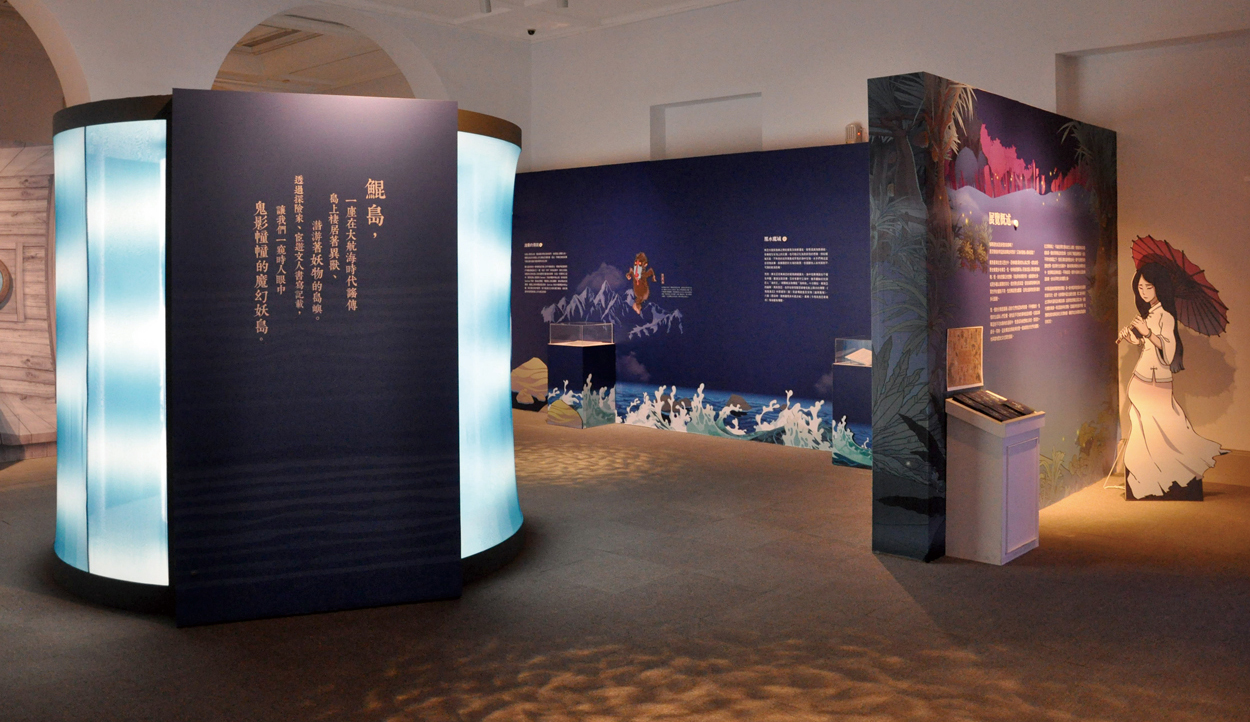
Fantastic Fables of Fictional Formosa|Passage to Taiwan: Paranormal Dangers|"So We Packed up and Moved to Taiwan": Austronesian Origin Stories
Austronesian Taiwanese are Taiwan's earliest inhabitants. They have cultivated and nurtured over their 8,000 years of known history a magnificent and rich cultural heritage, and provided Taiwan's earliest stories of the paranormal. Yet, due to the lack of a written language, the earliest records of these strange stories were, in fact, not authored by the indigenous peoples of this island, but rather by "outsiders".
In the 16th and 17th centuries, Taiwan was still a largely unknown island on the periphery of East Asia. It was thus imagined by pioneers and adventurers as a mysterious and magical island full of exploration potential. Most early records of strange occurrences here came from notes made by Chinese officials and foreign travelers. Of course, their experiences and secondhand tales of strange beasts inhabiting the island and of monsters roaming its waters may have been exaggerated due to the island's distinctly "foreign" air and to misunderstandings of it and its indigenous peoples.
During that period, Taiwan's landscape of ghosts and monsters was often an external construct woven by outsiders using threads drawn from Chinese and Western fantasies about this "barbarian land". Such cultural exchange brought about through foreign migration may have conversely affected how Taiwan's indigenous peoples narrated their own ghostly legends. But over time, people from different ethnic groups settled and died here, and, today, the stories of Taiwan's ghosts and monsters are solidly connected with the living environment, folk customs, and religious beliefs here.

Fantastic Fables of Fictional Formosa
When international travel was still a time-consuming, infrequent, and often risky endeavor, stories from abroad won eager audiences at home. Narrators not infrequently padded the original stories with their own fanciful imaginings to further wow their audiences. For their part, audiences, lacking knowledge of these storied lands, had little reason to doubt the veracity of what they were told. In 1704, George Psalmanazar published the book "An Historical and Geographical Description of Formosa, an Island Subject to the Emperor of Japan" in which he described the history, customs, and language of his purported home. Until this Frenchman finally admitted several years later to the whole thing being an elaborate hoax, his book and his purported expertise on all things 'Formosan' (Taiwanese) earned for Psalmanazar (who had never actually set foot on Taiwan) widespread respect and admiration among Europe's intelligentsia. Psalmanazar was believed because the island of Formosa lay far from Europe. His claims were difficult to challenge. At that time in history, traveler's claims were rarely doubted and generally accepted. After all … they were stories from the frontiers of the known world.
The 'frontier' was romanticized and painted in exotic, fanciful colors. Even when a narrator had not personally experienced a foreign land, stories and tales overheard about its savage ways and mysterious customs were enough fodder for a creative traveler to spin a sufficiently plausible yarn for the people back home. From the European Age of Exploration through the early years of Qing rule in Taiwan, 'Formosa' remained an enigmatic entity in the Western imagination – a distant realm ripe for whimsical speculation and home to a colorful array of monsters, ghouls, and goblins.
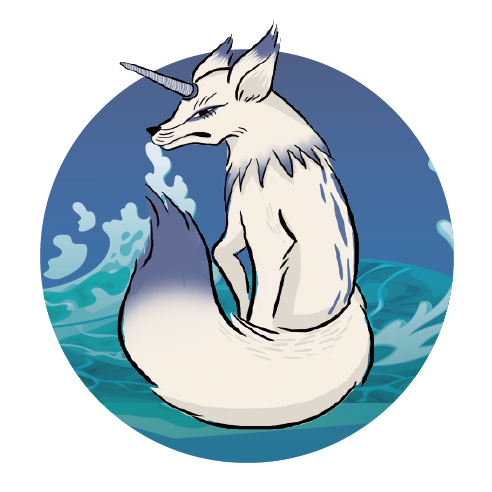
Licorne (Unicorn)
Source: VOYAGES ET AVENTURES DU CAPITAINE RIPON AUX GRANDES INDES (1617-1627) by Élie Ripon, Yuan-Liou Publishing, 2012.
This beast has a horn on its forehead, resides in the high mountains of southern Taiwan, is rarely seen, and is extremely difficult to catch. Locals believe that seeing this beast is a bad omen that may portend a giant storm or earthquake. The description was recorded by Captain Élie Ripon of the Dutch East India Company in his diary in the early 17th century.
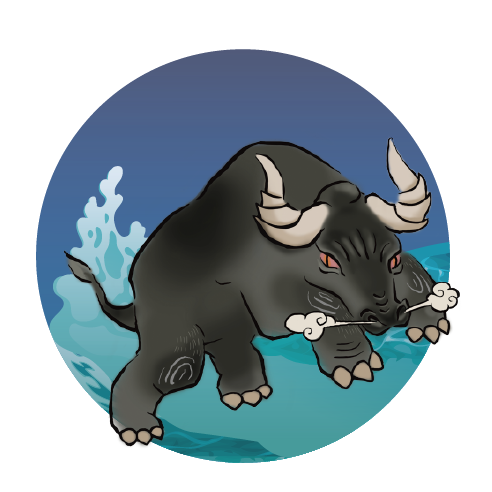
Giant Bull
Source: "Shi Hua-you's Travel Journal" by Shi Hua-you, TAIWAN POETRY COLLECTIONS, compiled by Lian Heng.
The bull is the size of an adult elephant, lives in the mountains near water, and is difficult to spot. Once tamed, it can come very close to humans. It is said that one can travel 150 km a day and easily cross rugged terrain. "Shi Hua-you's Travel Journal", compiled by Lian Heng during the Japanese Colonial Period, recorded that during the reign of the Tianqi Emperor in the late Ming dynasty, Shi Hua-you once crossed Taiwan's mountains on the back of this mythical bull with a friend.
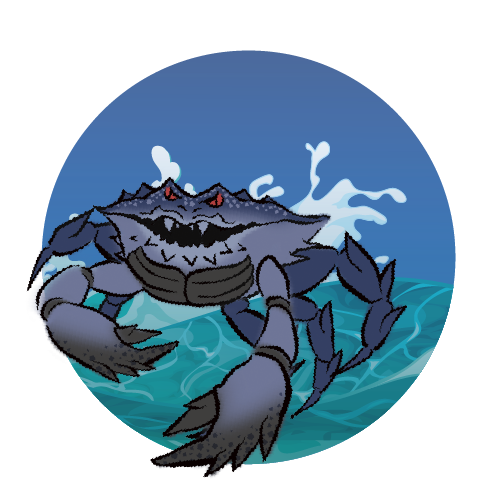
Giant Crab
Source: "Min Sea Experience", TAIYANG JOURNAL by Zhai Hao.
The crab hides in the black ditch (Taiwan Strait) and moves with the current. It is as big as a dining table and has a pair of gigantic claws. Sailors are terrified of disturbing the crab, as it will pierce the boat with its claws, drowning everyone onboard. Zhai Hao described his own horrifying sighting of the giant crab in TAIYANG JOURNAL.
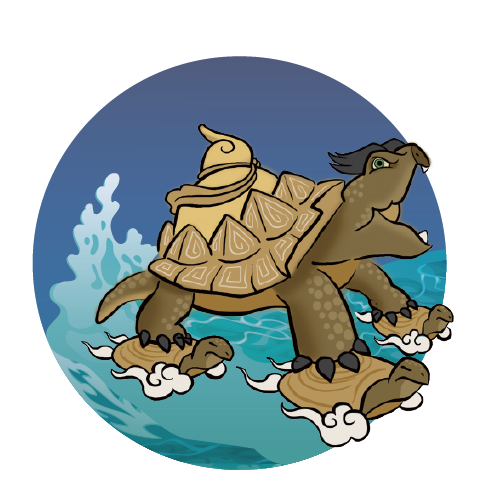
Wind-controlling Turtle
Source: YUNLIN COUNTY INTERVIEW by Ni Zan-yuan.
It is said that the turtle usually resides in the depth of valleys and ponds, and its whereabouts are unpredictable. It may travel down the mountain and occasionally appears in the waterfront along the port. It is said that this turtle has the special ability to stop strong winds, hence its name. Such a beast was once recorded in YUNLIN COUNTY INTERVIEW, a chorography compiled by Ni Zan-yuan.
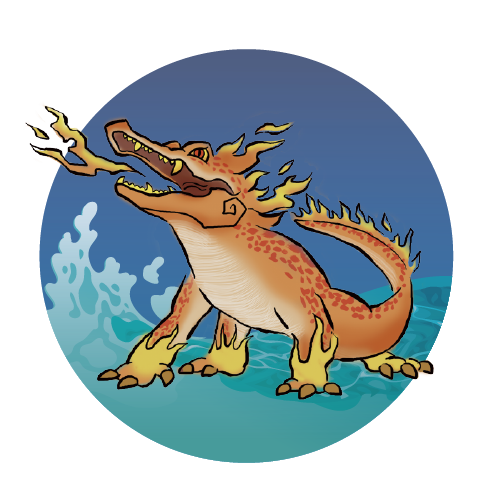
Land of the 'Fire Crocodiles'
Source: JOURNEY TO TAIWAN by Chang Jih-sheng.
Beasts called fire crocodiles, which spit flames from their golden scales, inhabit the black waters off Taiwan's western coast. They make their nests beneath the reefs and inhabit the depths of the Taiwan Strait. However, they are seen only rarely. Accounts of a fire crocodile sighting in the Pescadore (Penghu) Archipelago during 1683 were written into contemporary archives, including the TAIWAN PREFECTURAL GAZETTE, as well as described in Chang Jih-sheng's JOURNEY TO TAIWAN.
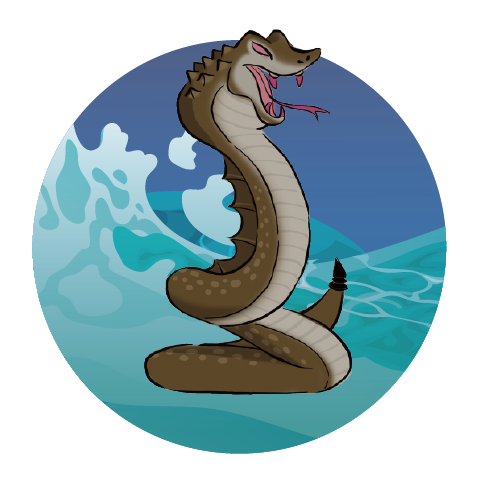
Hook Snake
Source: "Song of a Giant Snake Swallowing a Deer", CHI-KAN SYMPOSIUM by Sun Yuan-heng.
Legend has it that a horrific giant python called the "Hook Snake" or "Xiu She" lived in the deep mountains of primeval Taiwan. The reptile was long and big, and was able to wrap its tail around an adult sambar deer and swallow it whole in its giant mouth. The legend of this monstrous snake was described in both Lu Ruo-teng's "Long Snake Story" and Sun Yuan-heng's "Song of a Giant Snake Swallowing a Deer."
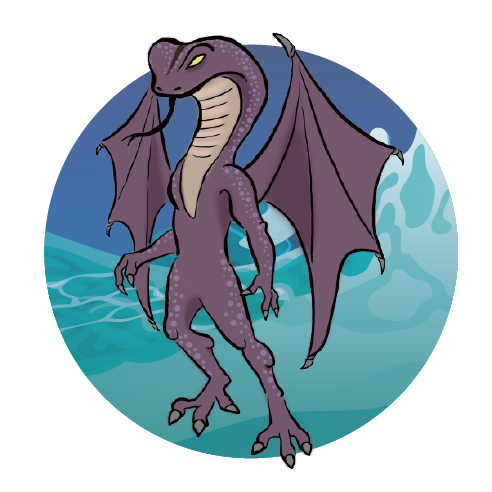
Snakehead Demon
Source: JOURNAL OF THE RECONSTRUCTION OF TAIWAN PREFECTURE by Fan Xian.
It is said that this demon nests in Taiwan's northeast coast and neighboring islands. It has a ferocious snakehead with a hissing tongue sticking out and fleshy wings that allow it to fly. It preys on humans and has a cruel nature. It was recorded in the JOURNAL OF THE RECONSTRUCTION OF TAIWAN PREFECTURE that the fleet of Fujian General Wan Zheng-se was almost entirely annihilated during an encounter with this demon.
Passage to Taiwan: Paranormal Dangers
The flow of people and trade between mainland East Asia and Taiwan traveled by necessity over the waters of the Taiwan Strait. Extreme weather, strange natural phenomena, and unusual marine life were sometimes imagined as being caused by or as being malevolent beasts. In relating stories of strange sea creatures, sailors revealed their sense of awe at the great unknown while reminding those that followed in their footsteps not to underestimate the dangers that lay in wait in the open sea.
As trade and commerce spread across the western Pacific from Northeast Asia to the East Indies, so too did stories of unusual maritime phenomena spread beyond coastal China and Taiwan. Japanese fishermen feared the Umibōzu, bald giants who lived beneath the sea and emerged from otherwise calm seas to overturn ships. This legend closely mirrors stories that were once shared up and down the southeast China coast about malevolent "sea monks". Prevalent in coastal Vietnam and Malaysia were stories of Qu Niao Po (Funayurei Shunyuba), a creature that would inundate and sink boats at sea with water. The 1791 publication Records and Anecdotes of the Islands notes that legends of Qu Niao Po were known at that time in Annan (Vietnam) and Liko and Johore on the Malay Peninsula.
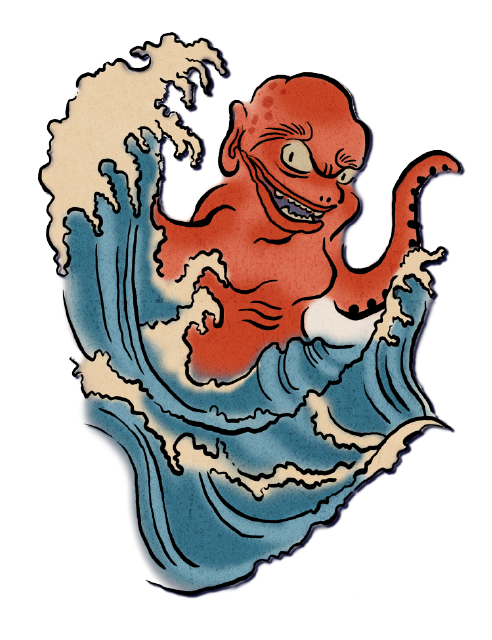
Sea Monk
Source: JOURNAL OF KAVALAN PREFECTURE by Chen Shu-jun.
This is a humanoid sea monster. There are many versions of its appearance, including a head smooth as a newborn baby, as described by Tang Cui-sheng. The monster is deemed an inauspicious sign that is often accompanied by sudden dark clouds, strong winds, and surging sea waves that capsize passing ships. In the JOURNAL OF PENGHU PREFECTURE, it was recorded that anyone so unfortunate to encounter the Sea Monk on the sea would need to burn incense and paper money to expel it. In the past, there was also the "Water Crossing Day" taboo, when the monster was said to wander the sea. Ships crossing the path of the Sea Monk will capsize. Hence, seamen avoided going out to sea on that day.
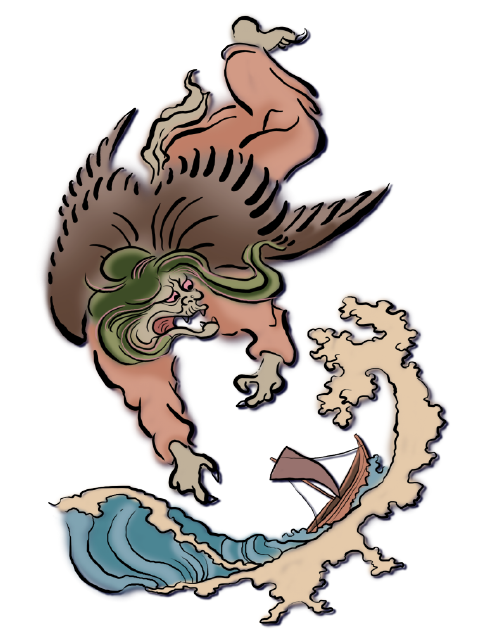
Qu Niao Po
Source: "Umi ni Kansuru Taiwan no Densetsu" (Maritime Legends of Taiwan) by Hideo Nishioka (Tang Tsui-sheng).
According to a description provided in the 18th-century RECORDS AND ANECDOTES OF THE ISLANDS, the Qu Niao Po are creatures that appear as winged women and fly around a ship's masts, dousing the hull with water until the ship capsizes. During Taiwan's Japanese Colonial Period (1895-1945) the legend of the Qu Niao Po shifted, and the creature was reimagined as a wandering spirit of the sea with a backstory that was occasionally embellished by a tale of tragic romance. Sailors were warned to watch out for lights circling their mast and for water falling from clear night skies. What was the remedy for these deadly visits? Common recommendations at the time included removing your shirt and then yelling curses at the Qu Niao Po and burning paper money while chopping down the ship's mast.
"So We Packed up and Moved to Taiwan": Austronesian Origin Stories
Prior to the first wave of Chinese settlement in the mid-1600s, Taiwan was dominated by a patchwork of Austronesian groups that were culturally and ethnically part of Polynesia / Oceania. Chinese settlement put the two ethnic streams into regular contact and set the stage for Chinese and Austronesians to share and absorb cultural traditions, including those related to the paranormal. Thus, it is thought that this was when these two groups began coopting and embellishing upon each other's ghost and ghoul traditions.
The basin that is today occupied by Taipei City was once home to the Basay (Kawanuwan) tribe. In his 1897 Survey of Formosan Pepo (Lowland Aborigine s) Tribes, Japanese ethnologist Inō Kanori records a story told to him by the people of Ki-pataw (in today's Beitou District) of how the Basay originally came to be in Taiwan. According to their account, the Basay once lived in a land called Sanasai (some legends locate Sanasai in today's Shanxi Province in northern China). However, the tribe was vexed by meddlesome demons called Sansiao that would steal their blankets and keep them from sleeping. This led to the decision to leave Sanasai. They eventually ended up coming to Taiwan by boat, making landfall in Shen'ao, near today's Keelung City. It is interesting to note that the Basay's Sansiao shares so much in common with the legendary Chinese demon 'Shanxiao' that this story's origin may actually be stories told to tribesmen by early Chinese settlers.
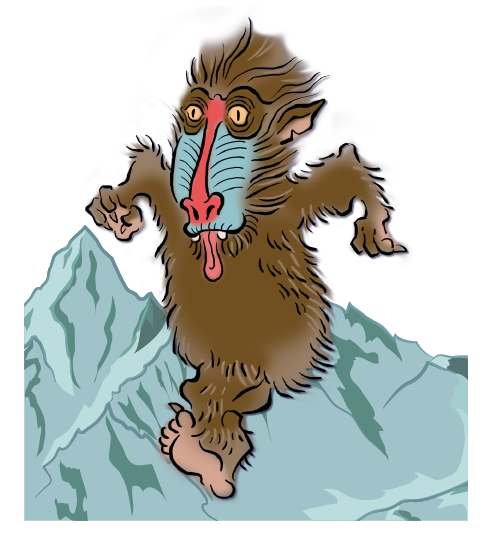
Shanxiao
Source: "Taiwan Doban no Kōhi" (Traditions of the Formosan Aborigines): Article 260, by Inō Kanori, in TŌKYŌ JINRUI GAKKAI ZASSHI (JOURNAL OF THE TOKYO ANTHROPOLOGICAL SOCIETY), issue 264, vol. 23, 1907.
A legend of the Basay people of Ki-pataw (Hokuto Village, today's Beitou District) tells that the tribe left their original homeland and moved to Taiwan due to demons known as 'sansiau', who would sneak into their village by night and steal their blankets while they were asleep. Kanori identified the word 'sansiau' as not of Basay origin and posited that the story, in fact, represents a cultural borrowing of the Chinese 'Shanxiao', which in Chinese legend is a "one-legged, diminutive demon that emerges at night to cause mayhem."









